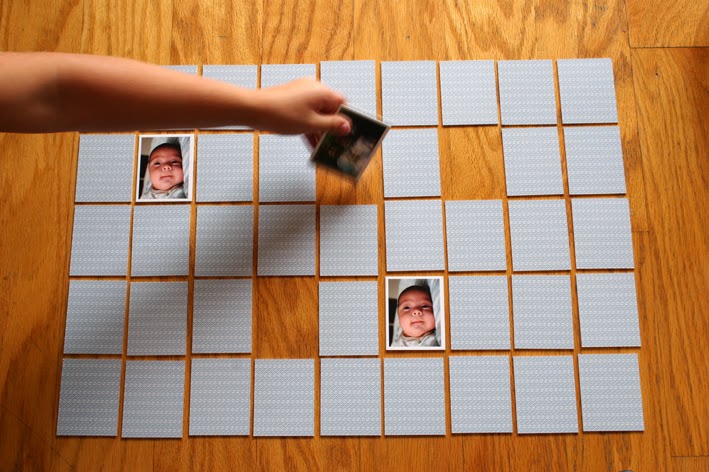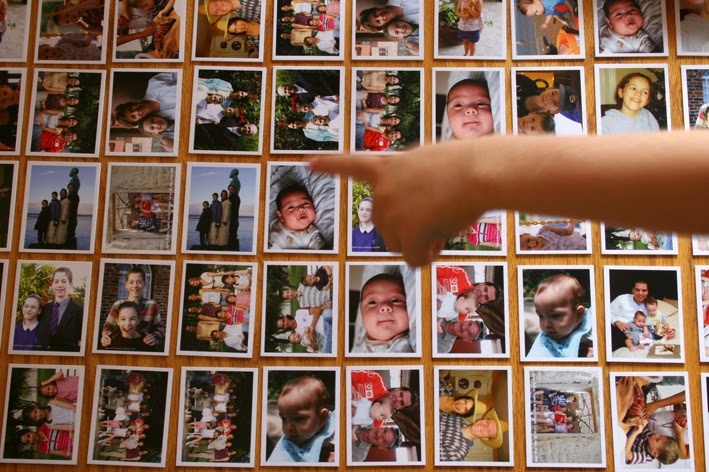Wellcome Trust’s science writing prize highlights face blindness as a common problem which is commonly overlooked.
Ideas for child-friendly testing of prosopagnosia, or why every nursery and primary school should play picture pairs with the children’s portraits.
The Wellcome Trust’s science writing prize has recently helped in highlighting the problem of ‘face blindness’ called prosopagnosia. Among the 640 articles submitted for the award during 2014, Kate Szell was judged the winner for her article: ‘Prosopagnosia - a Common Problem, Commonly Overlooked’.
Szell writes: “Most of us take for granted the fact that we recognise someone after a quick glance at their face. We don’t realise we are doing something very different when we look at someone’s face compared to when we look at anything else.” Some people fail to process faces in the way the majority of humankind does. Studies suggest 1 in 50 people could have some form of prosopagnosia; far too many for an incapacity to not be routinely checked and often failed to diagnose.
Face Blindness is an important enough problem to demand that children should be tested routinely, the earlier the better. A child-friendly, playful way to test for prosopagnosia is with an individual picture pairs game with 25 faces, which could include photos of family, school or nursery group members. The brain processes faces differently from other objects, with special difficulties in inverting face images. That makes photo picture pairs games of familiar faces an extremely valuable and unique learning and testing tool.
Face detection weaknesses are particularly striking during physical education lessons, as the children change into their PE kit and some take off their glasses, thereby removing a feature on which a prosopagnosia sufferer would rely on as a distinguishing visual clue.
Face-blind children risk walking off with strangers
Kirsten Dalrymple from the University of Minnesota is one of a handful of researchers looking into developmental prosopagnosia. Her particular interest is in prosopagnosic children. “Some seem to cope without much of a problem but, for others, it’s a totally different story,” she says and warns: “They can become very socially withdrawn and can also be at risk of walking off with strangers.”
Dalrymple points out that lack of awareness of the condition among child care specialists and the public, is a serious issue. Many parents of prosopagnosic children consult a number of specialists before realising what is causing their child’s peculiar behaviour, and it is usually discovered after seeing something about “face blindness” online or in the media, rather than from a specialist’s deduction, that makes the penny drop.
Early stage prosopagnosia testing
 |
| Bespoke picture pairs game with face photographs |
What causes developmental prosopagnosia is a puzzle
The term prosopagnosia (Greek: ‘prosopon’ = ‘face’, ‘agnosia’ = ‘not knowing’) was coined by the German neurologist Joachim Bodamer in 1947, but it has been widely recognised outside the context of brain injury only in the past decade. Its purest form is limited to facial recognition, but prosopagnosia sufferers also have problems with inanimate and animate objects and in interpreting facial signs of emotion.
Despite the importance of infant brain development, there may be processes that can be harnessed to help a face-blind child become a non face-blind adult. The brain needs to observe a face and remember it; it must identify a face as a face, then realise that it has seen that particular face before. We know that there are adults – but not children – with a combination of impaired face memory and unimpaired face perception, which suggests that the face perception element can be improved.
Worst for prosopagnosia children are swimming lessons, where most face distinguishing features are eliminated. The children suddenly feel exposed to an environment of pure strangers.
Children with prosopagnosia don’t value face or eye contact and take much longer to integrate into school or nursery groups as they struggle to identify and tell classmates apart. They are therefore often misdiagnosed with autism. But unlike autism, prosopagnosia does not diminish a sufferer’s social competence.
Specialist Dr Martina Grüter suggests working with portrait pictures
- To help pupils get to know their new peers many schools decorate the classroom walls with portrait photo prints of the pupils of a group or class. Below each picture are the children’s names. This helps children with prosopagnosia learn to identify the other children faster.
- To aid children with prosopagnosia, photos of fellow pupils, educators, teachers and possibly of other adults in the school (like caretakers, the school secretary and the head) should be made. Best not only to take the picture from the front, but also from different angles. Copies of the pictures could be given to pupils with face recognition difficulties to take home, suggests Dr. Grüter.
- Particularly interesting are group photos of similar looking children. This helps children with prosopagnosia to understand that some children of his or her class or group look very similar. They can then work on identifying distinguishing features.
- Many nursery and school teachers decorate their classroom with birthday photo calendars - with images of pupils and their corresponding names. You could browse the pictures with the prosopagnosic children and discuss the recognition of certain features.
- Even better than lending the birthday calendar would be a photobook with portrait photographs of classmates. The makers of the ‘CEWE Photo Books’ offer a photographic paper photo album, which is particularly suitable because this top-quality photobook has a stronger binding than most other photo book types.
- You can customize a facial picture pairs card game (or encourage the parents to make one). Some online photo print services such as FotoInsight professionally make photo picture pairs games by printing pictures onto pairs of durable cardboard cards. Dr Grüter adds: “For this you could ask the children to make neutral, happy, sad and angry looking faces. This makes the portrait photo picture pairs card game more demanding, keeping up the children’s interest for longer. In the beginning this can be played with the emotionally neutral faces only. Once the prosopagnosia sufferers become more comfortable with the faces, the level of difficulty can be increased.”


No comments:
Post a Comment